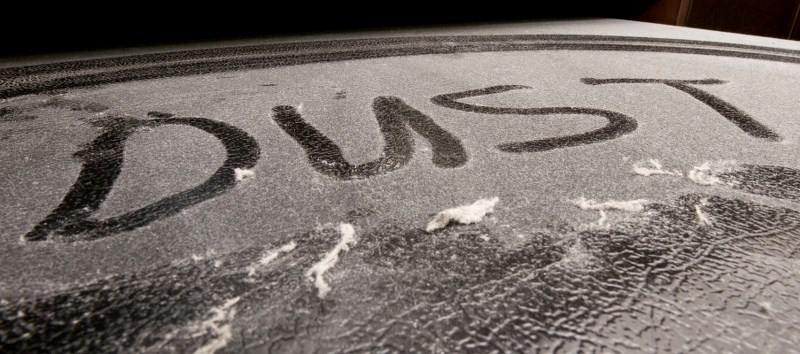I should probably dust more often.
There's a thick, grey layer of dust on most of my bookshelves, and I kick up clouds of it in parts of the bathroom. I can write notes to myself on the top of my refrigerator in it, and the dust bunnies in the storage room seem to have started some sort of civilization.
(I may be exaggerating slightly.)
Yet every time I sweep and suck the grey clouds away, they keep coming back, week after week. Where's it all coming from?
Dust refers to any nuisance particles of unknown origin, says Dennis French, president of DF Technical & Consulting Services (an Edmonton-based air-quality company that works throughout the St. Albert region). Those particles range in size from the width of a human hair to less than a micron.
Dust can be any number of substances including dirt, ash, concrete, pollen, mould, bits of cooked food, clothing fibres and dead skin cells.
It also includes bits broken off bugs, says Warren Kindzierski, a St. Albert resident who studies air quality at the University of Alberta.
"We've actually collected microscopic wings in samples."
Chemical analysis suggests that most dust is made of aluminum, calcium, iron, and silica, Kindzierski says – all substances common in dirt.
Dirt particles tend to have an irregular, crusty shape when viewed under an electron microscope, he continues. Particles from high-temperature fires, such as fly ash from coal, tend to be tiny spheres mere nanometres wide.
Computer modelling by environmental health scientist Paloma Beamer of the University of Arizona suggests that about 60 per cent of the dust found indoors actually comes from outdoors.
A lot of it gets sucked into your home by your furnace or tracked in by your feet, French says.
"The cold-air return is the biggest source of dust in your house," he notes, as all the air in it goes through it.
And once it's in your house, it's very hard to get rid of it.
Most vacuum bags won't trap particles smaller than 25 microns in size, so most dust particles will blow straight through them back into your home, French says.
"It's basically a vicious cycle."
Deadly dust?
Many of the substances in dust have potential health effects, notes Andrea Ferro, who studies particulate re-suspension at Clarkson University in Potsdam, N.Y.
"There's a strong correlation with airborne particles and human health," she notes. Since humans spend about 90 per cent of their time indoors, it's important to study those indoor particles.
Most of the visible dust you see in sunbeams is big enough to get caught by your nose hairs before you inhale it, Ferro says.
But smaller ones of 2.5 microns or less may be able to penetrate deep into the lungs, potentially leading to heart and lung problems, Kindzierski says.
Researchers have found potentially hazardous substances in household dust such as DDT despite the fact that its been banned for decades, Ferro says. Pollen and droppings from dust mites (which are rare in the dry air of Alberta) in dust can also cause allergic reactions.
The best strategy to limit your exposure is to keep these substances out of your home in the first place, Ferro says. Use hard floor surfaces instead of carpets, as they're easier to wipe clean, leave your shoes at the door, and use pesticides indoors sparingly.
Vacuums with HEPA filters can trap most dust particles bigger than 0.3 microns in size, French says. Damp cloths can also clean up dust.
"A dry wipe is just going to put everything in the air," he adds.
French also recommends getting your furnace cleaned and checking your dryer ducts for leaks. Use a pleated furnace filter as well, not one you can see through.
There actually may be lots of benefits to dust, Kindzierski notes. The hygiene hypothesis suggests that people may develop allergies due to immune systems raised in hyper-clean environments – something a dusty home could help prevent.
As for me, I plan to break out the dust-rag and vacuum later this week … yet again.




